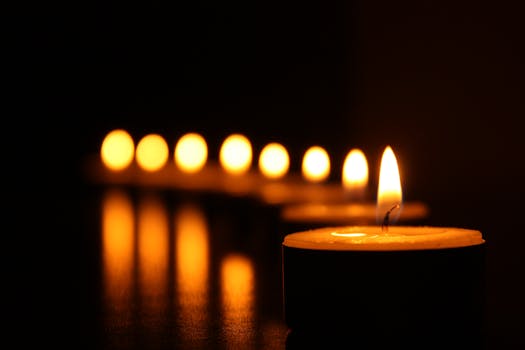Make Your Own Decorative Candles Using Natural Wax, Essential Oils, and Decorative Elements
Candle making is an art that combines creativity, relaxation, and the joy of crafting something beautiful and functional. With the growing trend towards sustainability and natural products, making your own decorative candles using natural wax, essential oils, and decorative elements has become increasingly popular. This article will guide you through the process, benefits, and creative ideas for making your own candles at home.
The Benefits of Using Natural Wax
When it comes to candle making, the type of wax you choose plays a crucial role in the quality and safety of your candles. Natural waxes, such as soy, beeswax, and palm wax, offer several advantages over traditional paraffin wax.
- Eco-Friendly: Natural waxes are biodegradable and derived from renewable resources, making them a more sustainable choice.
- Healthier Option: Unlike paraffin, which can release harmful toxins when burned, natural waxes are non-toxic and safe for indoor use.
- Longer Burn Time: Natural wax candles tend to burn longer and more evenly, providing better value for your money.
- Better Scent Throw: Essential oils blend well with natural waxes, allowing for a more authentic and pleasant aroma.
Essential Oils: The Heart of Your Candle
Essential oils not only add delightful fragrances to your candles but also offer therapeutic benefits. When selecting essential oils, consider the following:
- Lavender: Known for its calming properties, lavender essential oil is perfect for relaxation.
- Eucalyptus: This oil is refreshing and can help clear the mind, making it ideal for a study or workspace.
- Citrus Oils: Oils like lemon and orange can uplift your mood and energize your space.
- Woodsy Scents: Cedarwood and sandalwood provide grounding aromas that can create a cozy atmosphere.
When using essential oils, a general guideline is to use about 1 ounce of essential oil per pound of wax for a strong scent. However, you can adjust this based on personal preference.
Gathering Your Materials
Before you start making your candles, gather the necessary materials. Here’s a basic list:
- Natural wax (soy, beeswax, or palm wax)
- Essential oils of your choice
- Candle wicks (preferably cotton or wood)
- Containers (glass jars, tins, or molds)
- Double boiler or microwave-safe container for melting wax
- Thermometer
- Stirring utensil
- Decorative elements (dried flowers, herbs, or colored wax)
Step-by-Step Candle Making Process
Now that you have your materials ready, follow these steps to create your decorative candles:
- Prepare Your Workspace: Ensure your workspace is clean and free from distractions. Lay down newspaper or a protective covering to catch any spills.
- Melt the Wax: Using a double boiler, melt your natural wax slowly. Monitor the temperature; it should reach around 170-180°F (77-82°C).
- Add Essential Oils: Once the wax is melted, remove it from heat and let it cool slightly before adding your essential oils. Stir well to combine.
- Prepare the Containers: Secure the wick in the center of your container using a bit of melted wax or a wick holder.
- Pour the Wax: Carefully pour the wax into your containers, leaving a small amount of space at the top.
- Add Decorative Elements: Before the wax sets, you can add dried flowers, herbs, or colored wax for a decorative touch.
- Let It Set: Allow the candles to cool completely before trimming the wick to about 1/4 inch.
Creative Ideas for Decorative Candles
Once you master the basics, you can experiment with various designs and styles. Here are some creative ideas:
- Layered Candles: Use different colors of wax to create beautiful layered effects.
- Embedded Objects: Embed small decorative items like shells or crystals within the wax for a unique look.
- Seasonal Themes: Create candles that reflect the seasons using appropriate colors and scents, such as pumpkin spice for fall.
- Personalized Gifts: Make custom candles for friends and family, incorporating their favorite scents and colors.
Conclusion
Making your own decorative candles using natural wax, essential oils, and decorative elements is not only a rewarding hobby but also a sustainable choice for your home. By choosing natural materials, you can create beautiful, aromatic candles that enhance your living space while being mindful of your health and the environment. Whether you’re looking to relax with a soothing lavender candle or brighten your home with vibrant citrus scents, the possibilities are endless. So gather your materials, unleash your creativity, and enjoy the art of candle making!
